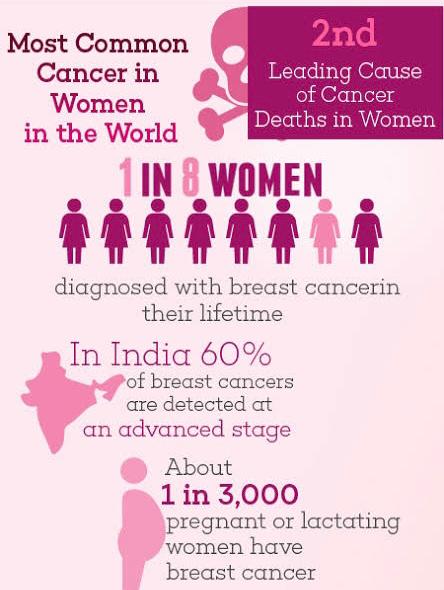

Your genes determine more than your blood type and physical features. They also determine your risk for developing certain diseases, including cancer. Some families have an inherited tendency to develop certain types of cancer. In these families, a change in the genetic material (called as a germ-line mutation), or DNA, predisposes those who carry it, to developing cancer. This germ-line genetic mutation may be passed down from parent to child. Several relatives with cancer in a family is often an indication that there may be inherited predisposition to cancer, putting healthy individuals of that family at a 1 in 2 risk of developing certain types of cancers. Cancers in such families typically occur at younger ages than in the general. Sometimes people in these families develop more than one cancer.
If you're facing inherited cancer risks, there's experienced help available in India. A specialized Genetics Consultation helps in identifying whether a cancer is hereditary, and if yes, what can be done to prevent it from developing. Options for genetic testing, early detection, risk reduction and prevention, and research opportunities are discussed.
Often there are no outward signs of breast cancer that you can see or feel. If there are outward signs, the more common ones include a lump, an area of thickening, or a dimple in the breast. Less common signs include breast swelling and redness or an enlarged underarm lymph node.
But even if you have one or more of these signs, it still doesn't mean you have breast cancer. Remember that most breast lumps turn out to be benign (not cancerous).
Still, it's extremely important that you see your doctor right away if you're worried that you might have breast cancer. Having your doctor take a look will ease your worry, and if anything is found, you'll be able to take care of it quickly. Physical examination of the breast is one way to find breast cancer.
Eight out of 10 lumps that women may feel in their breasts are benign (not cancerous). A benign lump can be a collection of normal or hyperactive breast gland cells, or it may be a water-filled sac (cyst). In any event, if you feel a lump and you're worried about it, don't hesitate to see a doctor. By getting a doctor to check the lump you'll ease your fears. And if it's something serious, you can start getting treatment right away. One way to make lumps less frightening is to get to know what your breasts normally feel like. There's no better way to find out than by doing your monthly breast exam.
The upper, outer area—near your armpit—tends to have the most prominent lumps and bumps. The lower half of your breast can feel like a sandy or pebbly beach. The area under the nipple can feel like a collection of large grains. Another part might feel like a lumpy bowl of oatmeal.
If you notice any changes in your breasts that last over a full month's cycle or that seem to get worse or more obvious over time, tell your doctor. Knowing how your breasts usually look and feel may also help you avoid needles and biopsies.
Copyright © 2024 Pink Chain Foundation . All right reserved